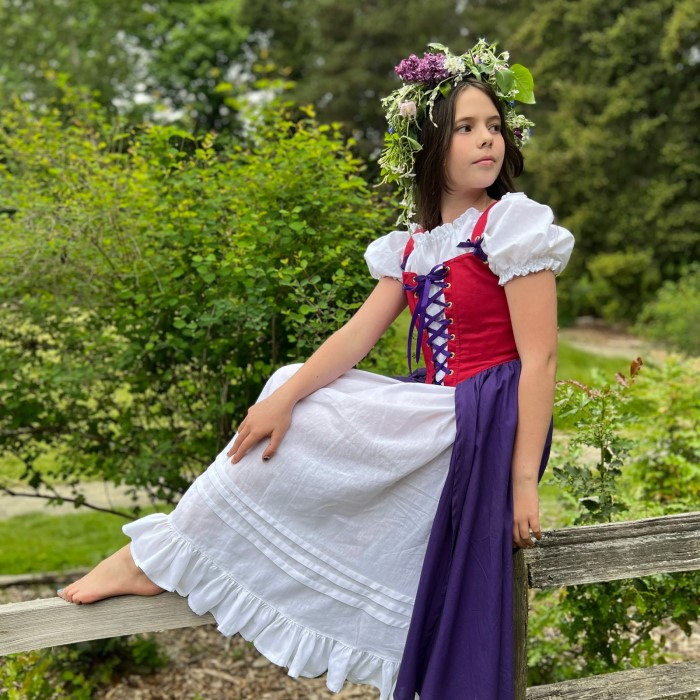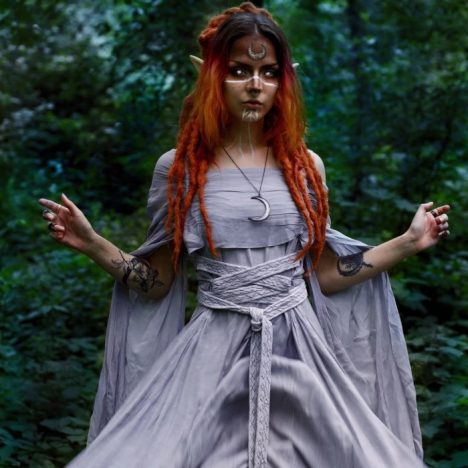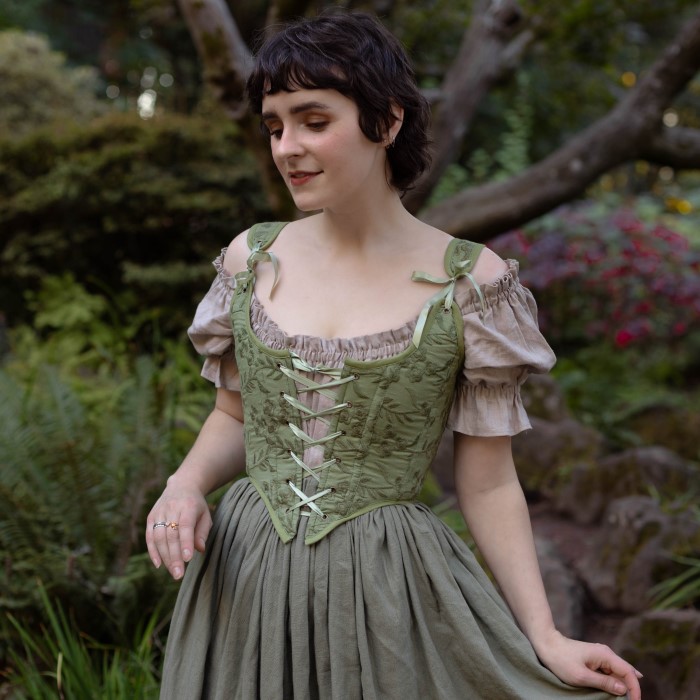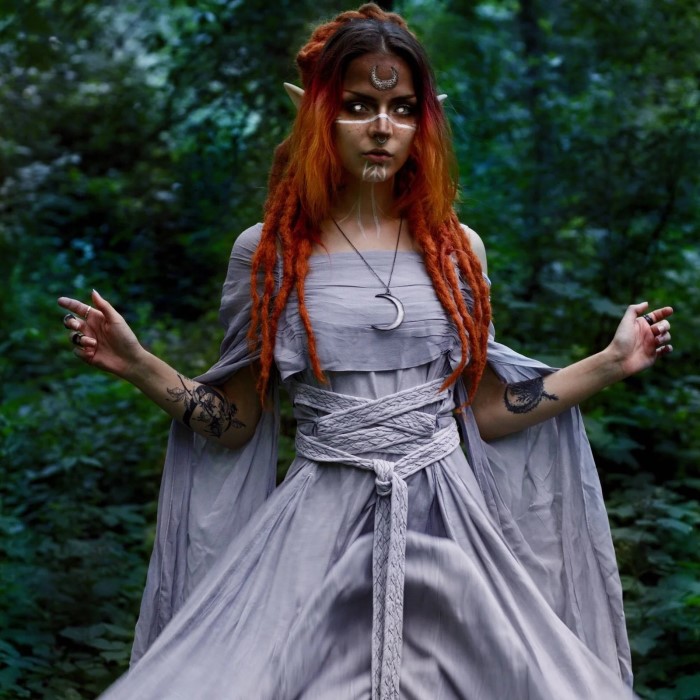Contents
- 1 Introduction
- 2 The Allure of Attending a Renaissance Fair
- 3 Modern Renaissance Costumes: A Fashion Evolution
- 4
- 5 Unique Renaissance Fair Outfits: Stand Out from the Crowd
- 6 Renaissance Fair Costume Trends: What’s In Style
- 7 Creating Creative Renaissance Costumes: DIY Tips
- 8
- 9 Dressing for Comfort and Practicality
- 10 FAQs About Renaissance Fair Costumes
- 11 Conclusion: Unleash Your Creativity with Renaissance Fair Costume Ideas
Introduction
Renaissance fairs transport attendees to a bygone era filled with music, crafts, and vibrant costumes. While the historical significance of the Renaissance period serves as the backdrop, dressing up adds an exciting dimension to the experience. The term “renaissance fair costume ideas” encompasses a wide variety of choices that range from the authentic and traditional to contemporary styles. As people look to modern renaissance costumes, they find a wealth of options that merge historical design with today’s fashion. This article will delve into unique renaissance fair outfits, the latest costume trends, and how to create a captivating look for your next event.

The Allure of Attending a Renaissance Fair
The allure of a renaissance fair lies in its immersive experience. Attendees step into a world that celebrates creativity, art, and history. Festivals often feature a multitude of activities, such as jousting, theatrical performances, and artisan demonstrations that engage all ages. The vibrant atmosphere encourages participants to dress up as characters from the past, helping everyone embrace the spirit of the era.
Costuming creates a sense of belonging and transforms the fair into an experience of storytelling. Choosing the right outfit can not only express individual personality but also allow one to delve deeper into the culture and aesthetic of the Renaissance. With countless possibilities, selecting an ensemble from the plethora of renaissance fair costume ideas can be both exhilarating and challenging.
Modern Renaissance Costumes: A Fashion Evolution
As styles continue to evolve, modern renaissance costumes have gained ground in popularity among fairgoers. Combining modern techniques with traditional elements provides a fresh take on historical attire. Designers often utilize contemporary materials alongside classic cuts, creating garments that are both comfortable and visually appealing.
Layering remains a key aspect of renaissance attire; however, how you approach layering can make a significant difference. For instance, using modern fabrics like jersey or lace can add a refreshing twist to traditional designs. When embracing such innovations, be sure to maintain some semblance of historical context to honor the richness of the Renaissance.
Unique Renaissance Fair Outfits: Stand Out from the Crowd
Crafting unique renaissance fair outfits allows participants to stand out and showcase their individuality. Instead of opting for generic costumes, consider infusing personal touches into your ensemble. This could mean selecting fabrics that align with your style or playing with colors that resonate with your personality.
Accessories can also play a pivotal role in creating a unique look. Consider adding elements such as intricate jewelry, unique footwear, or even a customized cloak that reflects your individual character. By mixing and matching elements from both past and present, you can develop a costume that commands attention while remaining true to your flair.
Renaissance Fair Costume Trends: What’s In Style
The Importance of Staying Current:
Keeping an eye on renaissance fair costume trends is essential for anyone looking to make a statement at these events. By understanding what’s in style, you can make informed choices that reflect both your personal taste and the thematic elements of the fair. Staying updated with current trends allows you to look polished and relevant while enjoying the festivities.
Rise of Eco-Friendly Materials:
One of the most notable trends in recent years is the increased emphasis on eco-friendly materials and sustainable practices. As awareness of environmental issues grows, many attendees are now prioritizing costumes made from sustainable fabrics. Choices such as organic cotton, linen, and recycled textiles not only help reduce waste but also reflect a growing commitment to environmental consciousness.
Vintage Inspirations:
Vintage pieces have become increasingly popular among fairgoers. Many participants are gravitating toward authentic vintage clothing or thrifted items that capture the essence of the Renaissance while adding a unique flair to their costumes. These timeless garments carry a history that adds depth to the outfit, allowing wearers to connect with the past in a meaningful way.
Authenticity Through Sustainable Choices:
Opting for sustainable fabrics helps create a more authentic appearance while minimizing your ecological footprint. Costumes made from natural materials often look and feel more genuine than their synthetic counterparts. By choosing eco-friendly options, you not only enhance your personal style but also contribute positively to the environment.
Balancing Historical Accuracy and Personal Expression:
While historical accuracy is important to many participants, the current trend leans more towards personal expression. Attendees are increasingly encouraged to explore options that may not be strictly period-correct but instead reflect their unique personality, interests, and creativity. This freedom allows for a deeper connection to one’s costume and the narratives they wish to portray.
Fusion of Modern and Traditional Designs:
The blending of modern aesthetics with traditional looks has gained significant popularity. Many participants are bold enough to incorporate contemporary elements into their costumes, creating a distinctive style that defies strict historical classification. This fusion allows for an unmistakable blend of eras, showcasing an individual’s creative spirit while honoring the Renaissance theme.
Endless Possibilities for Creativity:
The flexibility in modern renaissance fair costume trends opens the door to endless possibilities for creativity. Participants can explore different textures, colors, and styles that resonate with their identities. This trend not only enhances the visual tapestry of the fair but also enriches the experience for all attendees.
Creating Creative Renaissance Costumes: DIY Tips
For those who enjoy a hands-on approach, creating your renaissance costume can be an exciting and rewarding experience. DIY projects can significantly lower costs while also allowing you to create something truly unique. Start by gathering inspiration from various sources, including Renaissance art, literature, or films. These references can often provide insight into specific aesthetic elements you might want to incorporate.
When crafting, remember that creativity knows no bounds. Dive into your closet or local thrift shops for hidden gems; an old tablecloth might transform into a beautiful gown, or old jewelry could add the perfect accent. Let your imagination guide you as you combine different fabrics and textures to create a unique costume that emphasizes your personal style.
Dressing for Comfort and Practicality
The Importance of Comfort:
While aesthetics are undoubtedly significant when selecting a costume for a renaissance fair, you cannot overlook the aspects of comfort and practicality. These events are designed to be immersive and engaging, which often means you will be spending a considerable amount of time on your feet. Whether you are participating in activities, browsing artisan stalls, or enjoying live performances, wearing uncomfortable clothing can detract from your overall experience.
Interactive Nature of Renaissance Fairs:
Renaissance fairs encourage attendees to be active participants in the festivities. This interactivity typically involves long periods of standing, walking, and engaging in various attractions. As a result, it becomes essential to choose an outfit that allows you to move freely and comfortably, ensuring that you can fully enjoy everything the fair has to offer.
Choosing the Right Fabrics:
If you plan to attend a Renaissance fair during warmer months, considering lightweight and breathable fabrics can greatly enhance your comfort. Materials like cotton or linen allow air circulation and help keep you cool while being active. This consideration becomes especially important if you are wearing layers, a common choice for Renaissance costumes. Opting for fabrics that provide comfort will enable you to enjoy the event without feeling overheated or restricted.
Focus on Footwear:
Footwear is another critical aspect of your costume that warrants careful consideration. The right shoes can make a world of difference in your comfort level throughout the day. If you decide to wear traditional footwear, ensure that they are not only aesthetically pleasing but also comfortable enough for extensive walking. Look for shoes that provide adequate support and cushioning.
Stylish Alternatives:
Many attendees have found that stylish alternatives, such as modern boots, can seamlessly blend with a Renaissance-themed outfit while offering greater comfort. These contemporary choices often come with the benefits of newer materials and designs that enhance your overall experience. By selecting footwear that suits both the event’s aesthetic and your comfort needs, you’ll be better prepared to enjoy the fair to its fullest.
Final Thoughts on Preparation:
Ultimately, the key to a successful Renaissance fair experience lies in finding the right balance between style and comfort. By thoughtfully considering the fabrics and footwear you incorporate into your costume, you can create a look that not only honors the Renaissance theme but also allows for ease of movement and enjoyment. Preparing in advance will help ensure that you leave the fair with fond memories rather than discomfort.
FAQs About Renaissance Fair Costumes
Do most people dress up for the Renaissance Fair?
Yes, nearly all attendees at renaissance fairs dress up. Costumes vary widely in terms of complexity, with each participant finding a way to represent their character in a way that suits their personality.
What are some iconic Renaissance fashion trends?
Iconic trends include long flowing gowns embellished with rich fabrics, fitted bodices, and extravagant cloaks. Traditional knight armor and accessories complement male attire, signifying social status and occupation during the Renaissance.
What did men wear during the Renaissance?
Men commonly wore doublets, breeches, and elegant stockings. Accessories such as hats, capes, and shoes completed their outfits and varied by social class and occasion.
What fabrics work best for Ren-faire costumes?
Fabrics like velvet, brocade, cotton, and linen are ideal for creating renaissance costumes. These materials reflect authenticity while providing comfort and aesthetics.
Conclusion: Unleash Your Creativity with Renaissance Fair Costume Ideas
In summary, exploring renaissance fair costume ideas opens up a world of creative possibilities. Whether you gravitate toward modern renaissance costumes or unique renaissance fair outfits, the opportunity to blend historical styles with contemporary influences is boundless. By embracing the latest renaissance fair costume trends and adopting a DIY approach, you can design creative renaissance costumes that stand out. Embody the spirit of the event while expressing who you are. Your costume is not just a garment—it’s a statement, an expression of creativity that can further enrich your experience at the fair. Enjoy the process, and embrace the creativity that comes with dressing up for a journey into the past!




